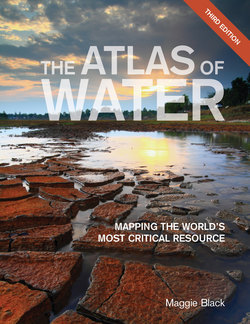Читать книгу The Atlas of Water - Maggie Black - Страница 6
На сайте Литреса книга снята с продажи.
ОглавлениеPart 3 Water for Living 44 12 Water for Drinking 46 Everyone has access to a source of drinking water but in an increasingly crowded world most natural sources are contaminated. 13 Water for Food 48 All food production depends on water, so water stress leads to stress on the global and family food basket. 14 Water for Sanitation 50 Many lower-cost sanitation systems in the developing world use no water or very little. 15 Water in the City 52 The increasing number of people living in towns and cities is exerting huge pressure on municipal infrastructure and services. 16 Water at Home 54 There are huge discrepancies in the amount of water people use in their home, depending on lifestyle and availability. 17 Water and Disease 56 Water’s critical role in hygiene and sanitation, and in the spread of diarrhoeal disease, confers on it a central place in public health. Part 4 Water for Economic Production 58 18 Water Footprint 60 Industrialized lifestyles involve the consumption of large amounts of “virtual” water embedded in foodstuffs and in manufactured items. 19 Water for Irrigation 62 Around two-thirds of water withdrawals are for irrigation, which supports a fifth of the world’s cropland. 20 Water for Fisheries 64 Fish make a major contribution to the global food supply and are increasingly farmed as a cash crop. 21 Water for Industry 66 Just over 20 per cent of all freshwater withdrawals are for industry. 22 Water for Energy 68 Water plays a vital role in the generation of electricity. 23 Transport and Leisure 70 Water is integral to many productive and cultural activities not easily traceable in economic statistics. 24 Water for Sale 72 The sale of water is an inevitable part of any organized delivery system, but in general the wealthy pay less than the poor.
